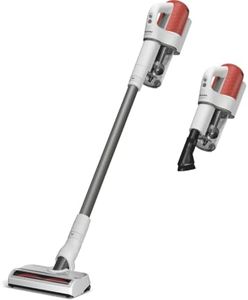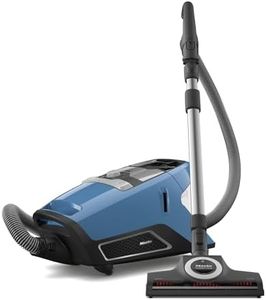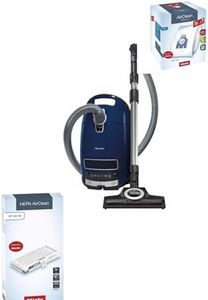We Use CookiesWe use cookies to enhance the security, performance,
functionality and for analytical and promotional activities. By continuing to browse this site you
are agreeing to our privacy policy
6 Best Miele Vacuums
From leading brands and best sellers available on the web.Recommended lists
Buying Guide for the Best Miele Vacuums
Choosing the right vacuum cleaner can make cleaning your home much easier and more effective. When looking at vacuums, especially from a reputable brand like Miele, it's important to focus on the features that match your cleaning needs and lifestyle. Think about the types of floors you have, whether you have pets, and how often you clean. Understanding the key specifications will help you find a vacuum that is comfortable to use, efficient, and long-lasting.Suction PowerSuction power refers to how strongly the vacuum can pull in dirt and debris. This is important because higher suction power means better cleaning, especially on carpets or when picking up pet hair. Suction power is often measured in watts or air watts. Lower suction is fine for hard floors and light cleaning, while higher suction is better for thick carpets or homes with pets. If you have mostly hard floors or do light cleaning, a moderate suction level is enough. For deep cleaning or lots of carpets, look for higher suction.
Filtration SystemThe filtration system determines how well the vacuum traps dust, allergens, and tiny particles. This is especially important for people with allergies or asthma. Miele vacuums often use HEPA filters, which are very effective at trapping small particles. Basic filters are suitable for general cleaning, while HEPA filters are best if you want to keep the air in your home as clean as possible. If you or your family have allergies, choose a vacuum with a high-quality HEPA filter.
Bagged vs. BaglessVacuums can be either bagged or bagless. Bagged vacuums collect dirt in a disposable bag, which is easy to remove and replace, keeping dust contained. Bagless vacuums use a reusable container that you empty yourself. Bagged models are great if you want less contact with dust and easier disposal, while bagless models save you from buying replacement bags but may require more frequent cleaning of the dust container. If you prefer convenience and less mess, go for bagged; if you want to avoid buying bags, consider bagless.
Weight and ManeuverabilityThe weight and maneuverability of a vacuum affect how easy it is to use, especially if you have stairs or large areas to clean. Lighter vacuums are easier to carry and move around, while heavier models may offer more power but can be harder to handle. If you have a multi-story home or need to move the vacuum often, a lighter, more maneuverable model is best. For single-level homes or if you don’t mind a heavier machine, you can consider a sturdier model.
Attachments and AccessoriesAttachments and accessories expand what your vacuum can do. Common tools include crevice tools for tight spaces, upholstery brushes for furniture, and turbo brushes for pet hair. The right set of attachments can make cleaning more efficient and help you reach tricky spots. If you have pets, look for pet-specific tools; if you have lots of furniture or tight spaces, make sure the vacuum comes with the right brushes and nozzles.
Noise LevelNoise level is how loud the vacuum is when running. This is measured in decibels (dB). Quieter vacuums are more comfortable to use, especially in apartments or if you clean while others are home. Lower decibel ratings mean less noise. If you are sensitive to noise or have young children or pets, look for a vacuum with a lower noise level.
Corded vs. CordlessCorded vacuums plug into the wall and offer continuous power, while cordless models run on batteries and offer more freedom of movement. Corded vacuums are good for long cleaning sessions and larger homes, while cordless vacuums are convenient for quick cleanups and smaller spaces. If you want unlimited run time, go for corded; if you value portability and ease of use, consider cordless.








